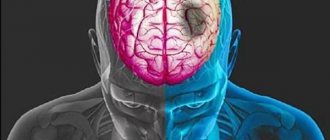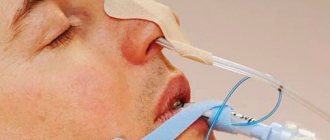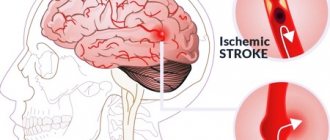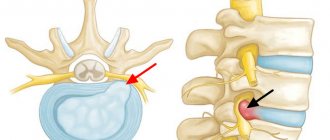sleep disorders ( dyssomnia, insomnia) . It is worth noting that these problems occur more often in women. If someone has even minimal sleep disturbance, then you need to understand the complexity and seriousness of this problem, since “lack of sleep” will sooner or later negatively affect the emotional and physical state of the body. It is also worth noting that an adult may experience a chronic form of insomnia.
Insomnia - causes and consequences
Insomnia is a sleep disorder that occurs due to a number of different factors. Let us dwell on the following reasons that can trigger the occurrence of insomnia.
- Mental disorders (psychotic and neurotic, neurosis-like register, psychosomatic disorders).
- Somatic diseases.
- Alcohol abuse.
- Use of psychotropic drugs.
- Disturbances of the endocrine system.
- Organic brain damage.
- Various types of intoxication of the body.
- There are various stimuli around a person – traumatic, stressful situations.
- Shift work.
- Abrupt change in time zones.
Several types of insomnia : acute sleep disturbance and chronic. Acute insomnia lasts up to three weeks, while chronic insomnia lasts more than three weeks.
Let's consider the following types of insomnia , according to the specific reason why it occurs.
- Adaptive insomnia occurs in response to stressful situations, as a result of which the functioning of the central nervous system is disrupted. At the end of the day, our nervous system is exhausted and enters a phase of overstimulation, as a result of which problems with falling asleep and transitioning into the phase of sound sleep appear. Typically, adaptive insomnia can last for about three months. The problem is completely solvable if you eliminate the irritating factor, it is important to do this under the guidance of an experienced specialist - a psychologist or psychotherapist.
- Psychophysiological insomnia is characterized by the occurrence of fear immediately before falling asleep. In such cases, a person forces himself to fall asleep, to which the nervous system begins to “resist.”
- Poor sleep hygiene – the cause of insomnia is the characteristics of the body and habits. Some people perform a whole “ritual” before going to bed, which does not always contribute to the onset of healthy sleep - this is doing physical activity before bed, drinking coffee (both factors bring the central nervous system into activity). It is worth considering that insomnia can occur if there is sleep during the daytime. To solve the problem, you need to reconsider your habits, your diet and daily routine.
- Secondary insomnia occurs due to certain somatic ailments. Basically, these are diseases of the endocrine or respiratory system, diabetes, problems with the cardiovascular system.
- Insomnia due to disruption of human biorhythms, when the hours of falling asleep and waking do not correspond. The reason for this may be the characteristics of the body, frequent moves, changes in climatic zones.
Many people do not pay attention to sleep disturbances, unaware of the danger and harmful effects on the body. This problem needs to be emphasized, since the lack of healthy and adequate sleep can lead to decreased performance, increased irritability, lack of energy, etc. Insomnia can also contribute to the occurrence of various psychosomatic diseases, such as atypical dermatitis, chronic gastritis, bronchial asthma, arterial hypertension, as well as mental disorders of the neurotic range (neuroses).
Clinical manifestations of dyssomnia
The clinical picture of dyssomnia varies and depends on its type. At the same time, whatever the disorder, in a short period it can cause serious changes in the emotional state, a decrease in the patient’s attentiveness and performance.
| Type of dyssomnia | Clinical manifestations |
| Psychosomatic dyssomnia |
|
| Dyssomnia due to alcohol and pharmacological drugs |
|
| Dyssomnia due to mental illness |
|
| Sleep disorders associated with specific syndromes |
|
| Somnambulism | Manifests itself by unconsciously performing complex actions during sleep. The patient gets out of bed and does something without waking up. |
In what cases should you contact a specialist for insomnia?
- Insomnia does not go away with changes in diet and lifestyle.
- Insomnia is a consequence of traumatic situations, stress, problems at home, at work, in school, etc.
- Insomnia is accompanied by difficulty breathing, panic attacks, increased anxiety, low mood, painful sensations in the chest area, etc.
- Insomnia has become a constant problem that is getting worse every day.
Types of dissomnia disorders
The following types of dissomnia disorders are distinguished:
- Endogenous – disorders that are caused by internal reasons. This group includes psychophysiological sleep disorders, idiopathic insomnia, narcolepsy, post-traumatic hypersomnia.
- Exogenous – disorders associated with external causes. This includes disorders that are caused by taking medications, alcohol, or violating the regime.
- Circadian – disruption of the circadian rhythm.
Depending on the duration, there are episodic (7-10 days), short-term (up to 3 weeks), chronic (more than a month).
Often there is a combined form of disorders - a combination of dyssomnia and parasomnia (behavioral disorder during sleep).
Diagnosis of insomnia
In order to diagnose insomnia and determine its type and classification, you need to contact an experienced, highly qualified specialist. A professional in this field will focus on the following criteria during the diagnostic process.
- Definition of a person's stereotype.
- Characteristic features of national culture.
- Features of the work.
- Results of pathopsychological examination.
- Characteristic traits of character and temperament.
- Results of polysomnographic examination.
- Evaluation of medical examinations.
During the diagnostic process, it is necessary not only to determine the presence of the disease, but also to find out the cause of its occurrence in order for the treatment to be as effective as possible.
Only a long and thorough examination by an experienced specialist will help to accurately determine the diagnosis and select effective treatment for a specific case.
Establishing diagnosis
The diagnosis of “dyssomnia syndrome” occurs taking into account complaints and a full examination, which includes:
- taking anamnesis;
- analysis of sleep diary entries;
- physical diagnostic measures;
- laboratory tests (in some cases).
If indicated, polysomnography is performed. During the procedure, respiratory vibrations of the abdominal wall and lungs are examined in a sleeping patient, the concentration of oxygen in the blood, EMG, ECG, EEG, and EOG are determined. Based on the obtained indicators, a hypnogram is compiled.
Treatment of insomnia
Usually, at the first manifestations of insomnia, everyone strives to independently solve this problem by using a variety of drugs from the medicinal group. Before purchasing and starting to use drugs, you need to know that on pharmacy shelves you can also find many herbal-based dietary supplements that have a hypnotic effect on the body. And even if it is indicated that the drugs are based exclusively on natural ingredients, they have certain contraindications and side effects that may occur when interacting with other drugs. Based on this, we strongly recommend that you consult a doctor before consuming anything.
Sleeping pills help improve sleep, but they do not eliminate the cause of the disease. Frequent use of sleeping pills can worsen insomnia and lead to addiction. For this reason, sleeping pills can be used in extreme cases and for a short period of time. Observations show that changes in diet and lifestyle have a beneficial effect on falling asleep.
In order to effectively combat insomnia, you need to learn to think positively.
- The phrase “Insomnia constantly torments me” should be replaced with a more positive one: “There are good nights and I even manage to dream.”
- The thought “To be in good shape you need to sleep every night” needs to be replaced with “Every second person on the planet solves problems with insomnia, and I can do it.”
- Replace the thought “Lack of sleep will adversely affect an important event” with “Regardless of the degree of my fatigue, everything will be at the highest level. And even if I can’t fall asleep, I rest and relax.”
- The thought “I will never get good sleep again” needs to be replaced with “Insomnia is treatable, and you need to set yourself up for a positive outcome.”
- The thought “I won’t be able to fall asleep before an hour later” should be replaced with “No matter what happens in the evening, I will still fall asleep.”
All our thoughts are material. It is for this reason that you need to learn to think positively; the result will not keep you waiting long. In contrast to your negative thoughts, you can make your own positive list.
If you know that at the end of the day you feel a feeling of heaviness and tension, there are a variety of relaxation techniques that will help relieve mental and physical stress. Relaxation helps you fall asleep quickly. The advantage of relaxation is the complete absence of drug treatment; the effect is based on the ability to relax and fill your body with positivity and lightness.
Relaxation techniques that have a beneficial effect on the process of falling asleep
- Before going to bed, it is recommended to do everything at a calm and relaxing pace: listen to classical music, the sound of rain or sea in dim light, do embroidery or knitting, read a book.
- Master the technique of abdominal breathing. You need to learn to breathe deeply in order to fill the body with oxygen. In this case, during the breathing process, the muscles of the back, thoracic region, and abdomen are activated, as a result of which the functioning of the parasympathetic nervous system is normalized, which helps to relax the body. Sit comfortably, close your eyes, inhale slowly and deeply, the depth of inhalation should increase each time.
- Muscle progressive relaxation - performed in a lying position. First, we strain the leg muscles as much as possible (tension time is up to ten seconds), relax. Then we strain the next group of muscles, gradually reaching the top of the head.
Insomnia is not a death sentence if you treat its treatment professionally and with a positive attitude!
We constantly detect plagiarism on our materials without providing a clickable follow link to them. In this case, without warning, we turn to Google DMCA , which leads to pessimization of the plagiarist. On the contrary, we welcome the popularization of our materials, but with the obligatory active follow link to this page psyhosoma.com/dissomniya-narushenie-sna-kak-spravitsya/ .
Origins of the disease
They started talking about the disorder on a large scale in 1983 thanks to the Swedish scientist Bengt Hagberg. At this time, he and his group studied 35 similar cases in 3 different countries: Portugal, France and Sweden.
However, Hagbert is not the discoverer of the syndrome. It was first discovered by pediatrician Andreas Rhett, whose name the disease bears. He observed two girls who had the same symptoms. He noticed them in the reception line. They sat on their mothers' laps, and they held their hands. The girls swung like pendulums, and then suddenly both began making stereotypical movements with their hands. The children were frozen in one position, detached from the world around them. The gaze was directed to one point. Their synchronicity in movements and behavior was amazing.
The doctor found similar case histories in his written archives, and then went to Europe to find the same patients there. In 1966, he made the first publications of his research, which, however, did not arouse much interest.
Rett called the disease he recorded brain atrophy syndrome. At first it was considered a manifestation of autism or schizophrenia, and only in 1983 was it brought into a separate nosological unit.
Currently, the syndrome is classified as a rather rare genetic disease. It occurs with a incidence of 1 in 15,000. The cause is said to be a mutation in the MECP2 gene. This gene is responsible for the synthesis of a certain protein that affects brain development. Normally this protein is
established some time after birth, must be suppressed by other genes to ensure normal brain development.
If the MECP2 gene is mutated, the protein is not completely inactivated, which causes abnormal brain maturation and provokes the development of Rett syndrome.
Usually the mutating gene is located on the X chromosome, so the disease mainly affects girls.








